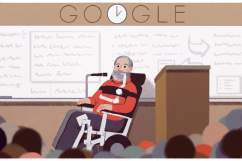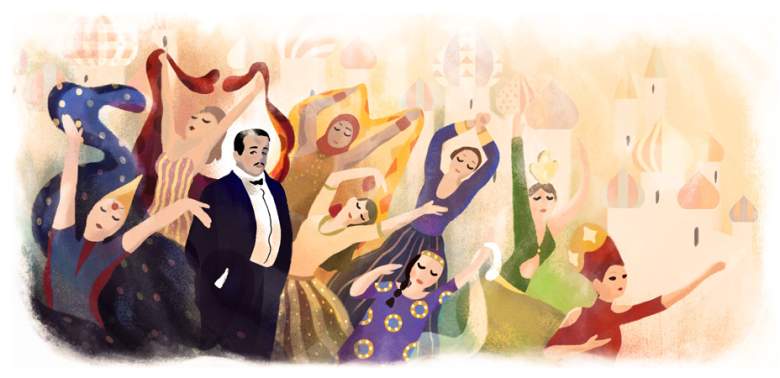
(Google/Sophie Diao)
Russian art impresario Sergei Diaghilev is the subject of today’s Google Doodle, as March 31 would have marked his 145th birthday. Diaghilev was best known as the founder of Ballets Russes, a dance company that influenced more than just ballet.
Diaghilev was born Sergei Pavlovich Diaghilev and was often referred to as just “Serge.” He lived from March 31, 1872 to August 19, 1929.
“Today, on Sergei Diaghilev’s 145th birthday, we salute his boundless imagination with a Doodle that depicts the impresario flanked by his vividly costumed Ballets Russes dancers against an onion-domed Russian backdrop,” Google notes. “Diaghilev wowed the world, both then and now.”
Here’s what you need to know about Diaghilev.
1. Diaghilev Commissioned Igor Stravinsky to Write ‘The Firebird’ & ‘The Rite of Spring’
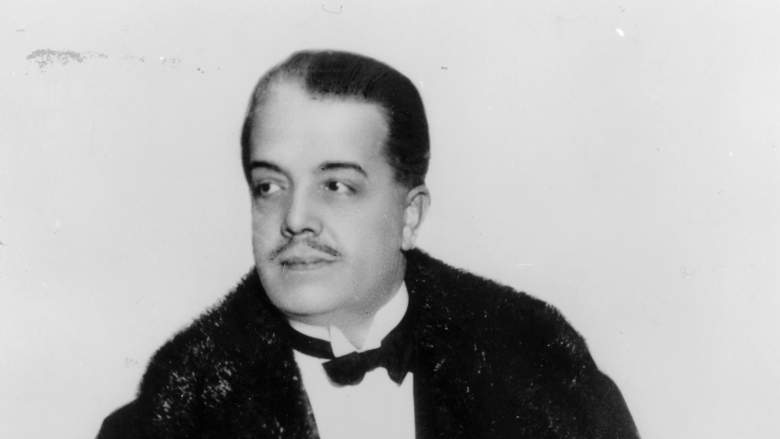
(Photo by Sasha/Getty Images)
Diaghilev pushed the boundaries of acceptable art his entire life, but his major contribution to European art and culture came through the Ballets Russes. He founded the dance company in 1909 and it never performed in Russia. The group made its biggest impact in the years before World War I.
Perhaps his most famous collaboration was with fellow Russian Igor Stravinsky. Diaghilev commissioned Stravinsky to write The Firebird in 1910. It was followed by Petrushka and The Rite of Spring.
Long before The Rite of Spring became associated with dinosaurs thanks to Disney’s Fantasia, the ballet famously caused a scandal when it was first performed at the Theatre des Champs-Elysees in Paris in May 1910. As The Telegraph noted on the 100th anniversary of Rite‘s premiere, it’s still not clear what part of the ballet really shocked the audience. It’s possible that it was the music itself or the inventive choreography from Vaslav Nijinsky, a key figure of the early Ballets Russes seasons.
“The smart audience in tails and tulle, diamonds and ospreys, was interspersed with the suits and bandeaux of the aesthetic crowd,” Jean Cocteau wrote of the premiere, notes the Telegraph. “The latter would applaud novelty simply to show their contempt for the people in the boxes… Innumerable shades of snobbery, super-snobbery and inverted snobbery were represented.”
2. During World War I, Diaghilev Took the Ballets Russes on Tours of North and South America
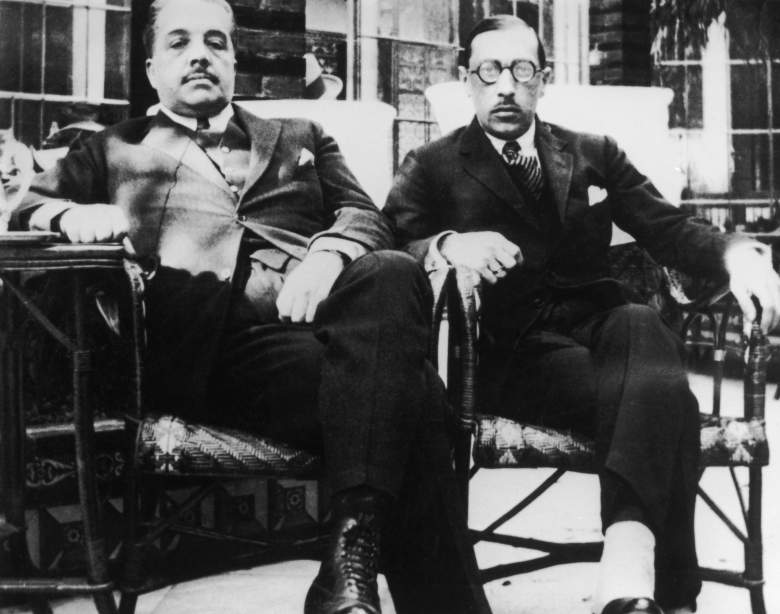
Sergei Diaghilev (left) with Igor Stravinsky in 1921. (Photo by Hulton Archive/Getty Images)
According to the Victoria & Albert Museum, Diaghilev did not let World War I stop the Ballets Russes. In 1913, he fired Nijinsky after Nijinsky got married, and the war almost broke up the company. In addition, Russia’s civil war broke out and Diaghelev would never return to his native country.
After World War I started in 1914, the company finally got back together in May 1915. Since many of the great European theaters were unavailable, Diaghilev decided to take the company to North and South America. During this time, Léonide Massine became the star choreographer and the company began testing new ideas to take home to Europe after the war.
Even into the 1920s, Diaghelev continued adding new ballets every year. He picked Henri Matisse, Georges Braque and other famous French artist to deign productions.
After Diaghilev’s death from diabetes in August 1929, the company broke off, although members of the company would branch off into other companies. The influence of the Ballets Russes on ballet continues into today, as many members would establish studios to teach new generations.
3. Picasso Designed Costumes & Sets for the Ballet Russes, Working on a Ballet Co-Written by Jean Cocteau
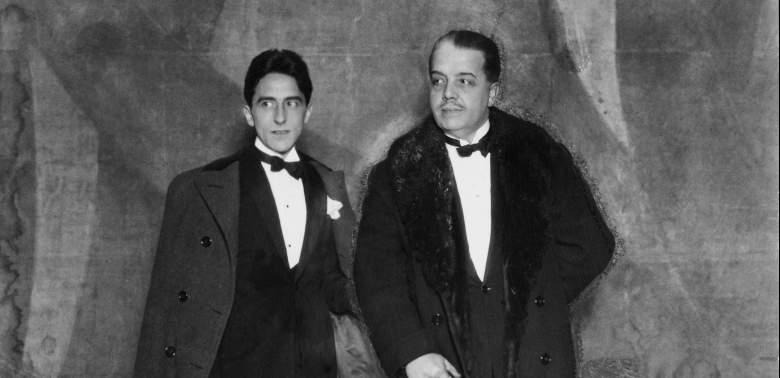
Jean Cocteau with Diaghilev. (Photo by Sasha/Getty Images)
Diaghelev worked with almost every major artist in Europe during the 1910s, many of whom are still well known today. He brought the unlikely pair of Pablo Picasso and Jean Cocteau together for 1917’s Parade. Cocteau, a well-known poet who later directed the 1946 version of Beauty and the Beast, wrote the scenario. Erik Satie wrote the music, while Picasso designed the sets and costumes.
As the Independent notes, Diaghilev met Picasso in 1916 and Picasso hadn’t seen a Russian ballet before. But three months later, he worked on Parade.
The costumes Picasso created for Parade brought his famous Cubist works to life. He ended up working on Le Tricorne, Pulcinella and Le Train Bleau for the Ballets Russes.
Matisse and Joan Miro also designed costumes for Ballets Russes productions. While Picasso was open to the idea, Matisse wasn’t so easy to convince.
“Matisse was more interested in costumes than the set and almost certainly hand-painted them himself,” Jane Pritchard, a curator at the V&A Museum, told the Independent in 2010. “Matisse was more established than Picasso and took convincing to work with Diaghilev, but it appears that it wasn’t as ghastly an experience as he had feared it would be.”
4. He Wanted to Be a Composer, but Nikolai Rimsky-Korsakov Told Him He Wasn’t Good at Writing Music
Diaghilev was born into a wealthy family in Russia, as the family ran vodka distilleries. But by 1890, their money ran out and Diaghilev was forced to support the family. He still found time to attend university, first studying law before taking classes at the St. Petersburg Conservatory of Music.
As The New Yorker notes, in 1894, Diaghilev managed to get a meeting with the master composer Nikolai Rimsky-Korsakov. He wanted to show off his own compositions, but Rimsky-Korsakov was not impressed. Although he believed that Rimsky-Korsakov would be proven wrong, Diaghilev wrote to his stepmother, Yelena Valerianovna Panayeva, that he might turn his attention to promoting other artists.
After college, he changed significantly, dressing elegantly and gaining weight. He embraced an off-center white-stripe that divided his hair. In 1897, he organized the World of Art exhibition society and started an arts journal two years later. Before establishing Ballets Russes, he focused on showing Russian art to Westerners.
Diaghilev never married, but it was well-known at the time during his life that he was a homosexual. The New Yorker notes that when he took a tour of Europe while in college, he was accompanied by first cousin Dmitry Filosofov, and they reportedly became lovers.
5. ‘The Red Shoes’ Is Loosely Inspired by Diaghilev & the Ballets Russes
In 1944, British filmmaking team Michael Powell and Emeric Pressberger produced The Red Shoes, a ballet drama that was such a success that it was nominated for the Best Picture Oscar and won two. As The New York Times noted, the Boris Lermontov character was loosely based on Diaghilev. The character was played by Anton Walbrook, who was openly gay, like Diaghilev.
In the film, Lermontov is angered by dancer Vicky Page’s (Moira Shearer) to fall in love, forcing her to chose between art and life. The Times notes that the real Diaghilev also fought with his dancers over romance. In addition to firing Vaslav Nijinsky because Nijinsky married a woman, he did the same to Léonide Massine in 1921.
The Guardian notes that in 1911, he wasn’t happy with Nijinsky’s sister marrying. He gave her a ring to tell her that it meant she was to “wed her to her art.”
Like his father, Diaghilev lived beyond his means. He died in a Venice hotel room. The Guardian reports that his friends had to pay the bill.
